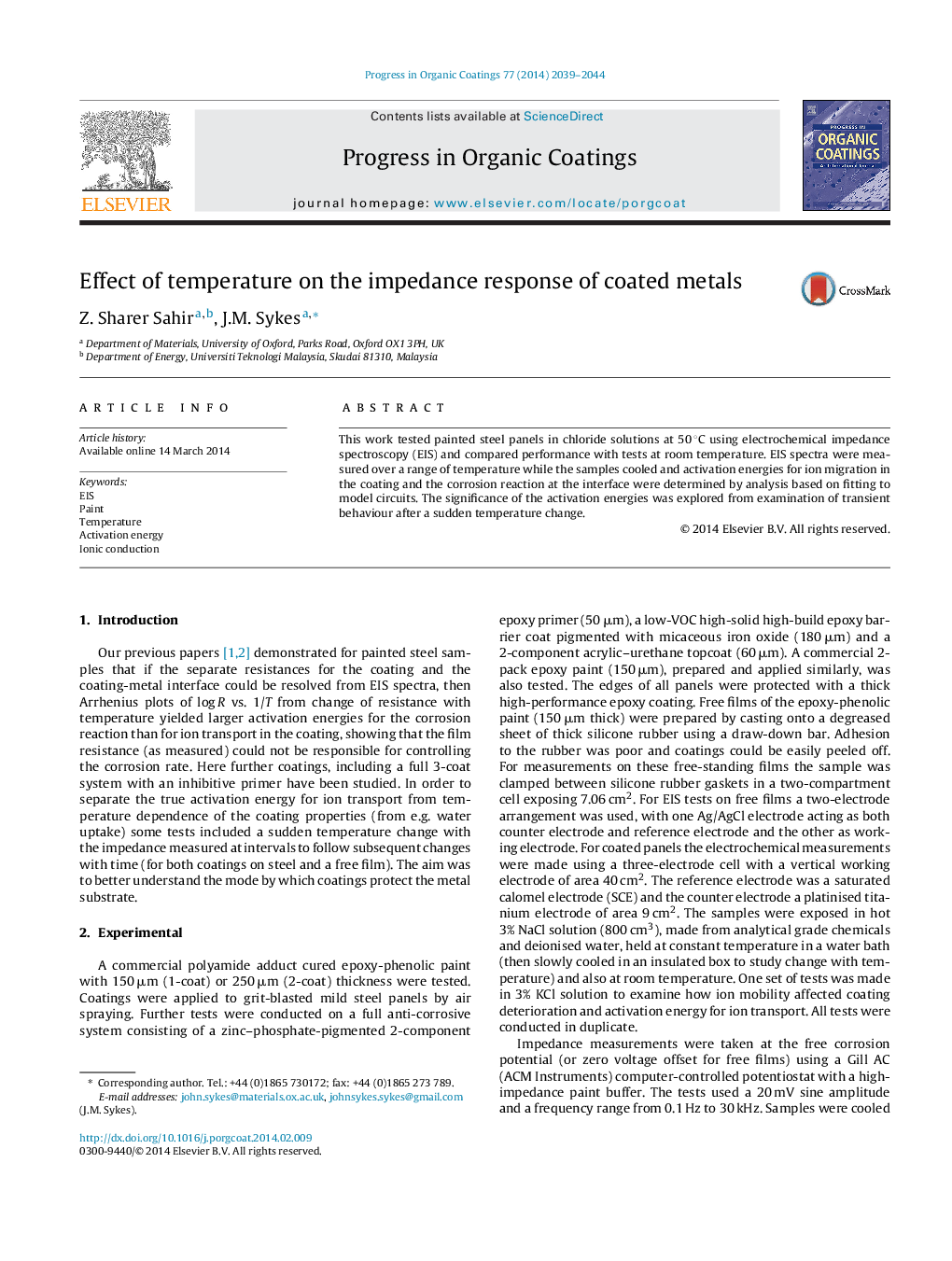| Article ID | Journal | Published Year | Pages | File Type |
|---|---|---|---|---|
| 692444 | Progress in Organic Coatings | 2014 | 6 Pages |
•EIS was used to determine activation energy for ionic conduction.•After a sudden temperature change resistance changes in two stages.•This shows that activation energy comprises two parts.•These are the energy barrier for ion migration and an enthalpy term.•The enthalpy change controls the slow change in resistance.
This work tested painted steel panels in chloride solutions at 50 °C using electrochemical impedance spectroscopy (EIS) and compared performance with tests at room temperature. EIS spectra were measured over a range of temperature while the samples cooled and activation energies for ion migration in the coating and the corrosion reaction at the interface were determined by analysis based on fitting to model circuits. The significance of the activation energies was explored from examination of transient behaviour after a sudden temperature change.
